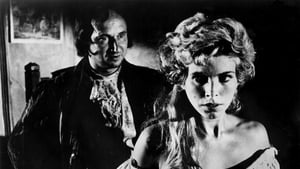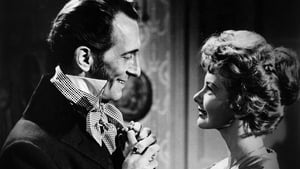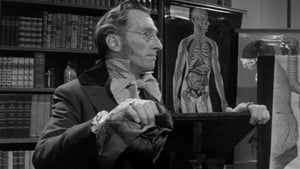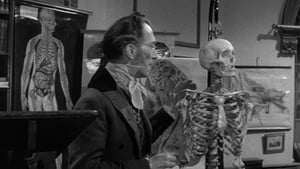Contact: info@alwanfilm.com
Video Sources 0 Views
- Watch trailer
- The Flesh and the Fiends 1960

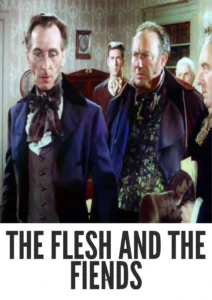
The Flesh and the Fiends 1960 Colorized
Synopsis
Table of Contents
ToggleReview: The Flesh and the Fiends 1960 Colorized – A Gripping Horror Classic Illuminated in Vivid Color

Introduction
“The Flesh and the Fiends” (1960) is a chilling journey into the dark recesses of human nature, exploring themes of greed, morality, and the macabre. This article delves into the significance of this early colored film, examining its impact on audiences and its lasting legacy in the horror genre.
Check The Full Colorized Movies List
Check Our Colorized Movies Trailer Channel
Understanding The Flesh and the Fiends 1960 Colorized: Director, Cast, and Genre
Directed by John Gilling, “The Flesh and the Fiends” (1960) stands as a testament to his ability to craft atmospheric and haunting narratives. The film boasts a remarkable cast, including Peter Cushing, Donald Pleasence, and George Rose, whose performances bring a chilling realism to this tale of horror. Set within the horror genre, the film blends historical drama with suspense, creating a gripping narrative that continues to captivate audiences.
Exploring the World of The Flesh and the Fiends 1960 Colorized: Plot and Characters
“The Flesh and the Fiends” (1960) is based on the infamous Burke and Hare murders of 19th-century Edinburgh. The plot follows Dr. Robert Knox (Peter Cushing), a distinguished anatomist whose insatiable need for cadavers leads him to strike a deal with the unscrupulous William Burke (George Rose) and William Hare (Donald Pleasence). As Knox turns a blind eye to the origins of the bodies provided to him, the murderous activities of Burke and Hare spiral out of control, resulting in a gripping and horrifying tale of moral descent and human depravity.
The Art of Film Colorization
Film colorization is a transformative process that enhances the visual appeal of classic black and white films, allowing new generations to appreciate their rich narratives in vivid color. By digitally adding color, filmmakers can offer a renewed perspective on these timeless stories, enhancing their visual and emotional impact.
Early Colored Films: A Brief History
The journey of film colorization began with early experiments in hand-tinting and progressed to the development of Technicolor. These innovations paved the way for contemporary digital colorization techniques, which bring a new dimension to classic films, allowing audiences to experience them in a fresh and dynamic way.
The Flesh and the Fiends 1960 and Its Early Colored Version
The decision to release “The Flesh and the Fiends” (1960) in a colorized format was met with a mix of anticipation and skepticism. For some, the addition of color breathed new life into the film, highlighting its atmospheric settings and enhancing its visual storytelling. For others, it raised concerns about preserving the integrity of the original black and white cinematography. Despite the controversy, the colorized version offers a compelling way to experience this classic horror tale.
The Debate Over Film Colorization
The debate over film colorization is longstanding, with advocates praising its ability to rejuvenate classic films and detractors arguing that it can compromise the original artistic vision. This discussion continues to shape the way we perceive and appreciate classic cinema, highlighting the balance between innovation and preservation in the film industry.
Examining The Flesh and the Fiends 1960 as an Early Colored Film
The colorization of “The Flesh and the Fiends” (1960) adds a new layer to its atmospheric horror. The dark, shadowy settings of 19th-century Edinburgh come to life in eerie hues, enhancing the film’s suspense and horror elements. While some purists may prefer the stark contrast of the original black and white version, the colorized film offers a unique and engaging viewing experience that underscores the film’s macabre themes.
Influence and Legacy: The Flesh and the Fiends 1960 Colorized’s Impact on Cinema
“The Flesh and the Fiends” (1960) has left a lasting mark on the horror genre, influencing countless filmmakers with its chilling narrative and haunting performances. Its exploration of the Burke and Hare murders has inspired numerous adaptations and reimaginings, solidifying its place in the annals of horror cinema.
Director’s Cinematic Legacy: Beyond The Flesh and the Fiends 1960 Colorized
John Gilling’s influence extends far beyond “The Flesh and the Fiends” (1960). Known for his work in horror and thriller genres, Gilling has directed numerous films that continue to captivate audiences. His ability to create suspenseful and atmospheric narratives has left a lasting impact on the film industry, inspiring future generations of filmmakers.
Themes Explored in The Flesh and the Fiends 1960 Colorized
“The Flesh and the Fiends” (1960) delves into themes of greed, morality, and the dark side of human nature. Through its exploration of the Burke and Hare murders, the film examines the lengths to which individuals will go for profit and the moral consequences of their actions. It invites viewers to reflect on the ethical dilemmas faced by its characters and the broader implications of their choices.
Reception and Controversy Surrounding The Flesh and the Fiends 1960 Colorized
Upon its release, “The Flesh and the Fiends” (1960) received critical acclaim for its gripping narrative and powerful performances. However, the decision to release a colorized version sparked debate among film enthusiasts. While some praised the enhanced visual experience, others felt that the colorization detracted from the film’s original atmosphere. Despite the controversy, “The Flesh and the Fiends” (1960) remains a beloved classic that continues to captivate audiences.
Where to Watch The Flesh and the Fiends 1960 Colorized Online
For those eager to experience the chilling tale of “The Flesh and the Fiends” (1960), the film is available on various streaming platforms such as Amazon Prime, Hulu, and specialized horror streaming services. Whether viewed in its original black and white or the colorized version, the film promises a gripping and unforgettable experience.
FAQs About The Flesh and the Fiends 1960 Colorized
Q: Is “The Flesh and the Fiends” (1960) based on a true story? A: Yes, “The Flesh and the Fiends” (1960) is based on the real-life Burke and Hare murders that took place in 19th-century Edinburgh. The film dramatizes the gruesome events surrounding these infamous criminals and their association with Dr. Robert Knox.
Q: Who are the main actors in “The Flesh and the Fiends” (1960)? A: The film features an outstanding cast, including Peter Cushing as Dr. Robert Knox, Donald Pleasence as William Hare, and George Rose as William Burke. Their performances bring a chilling realism to this historical horror tale.
Q: What awards did “The Flesh and the Fiends” (1960) win? A: While “The Flesh and the Fiends” (1960) did not win any major awards, it received critical acclaim for its compelling narrative, atmospheric direction, and powerful performances. It remains a significant film in the horror genre.
Q: Why was “The Flesh and the Fiends” (1960) released in a colorized format? A: The decision to release “The Flesh and the Fiends” (1960) in color was aimed at appealing to modern audiences and providing a fresh perspective on the film’s chilling narrative. The colorized version enhances the visual experience, making the atmospheric settings and macabre details more vivid and engaging.
Q: How does the colorized version of “The Flesh and the Fiends” (1960) differ from the original? A: The colorized version of “The Flesh and the Fiends” (1960) adds a new dimension to the film, bringing its settings and characters to life in vibrant hues. While the original black and white version has a stark, haunting quality, the colorized version enhances the visual impact and highlights the atmospheric elements of the film.
Q: Is the colorization of classic films generally accepted by audiences and critics? A: The acceptance of colorization varies among audiences and critics. Some appreciate the renewed visual appeal and accessibility for modern viewers, while others feel that it compromises the artistic integrity of the original work. The debate over colorization continues to shape how classic films are perceived and preserved.
Conclusion
“The Flesh and the Fiends” (1960) remains a gripping and chilling classic that continues to captivate audiences with its haunting narrative and powerful performances. Whether viewed in its original black and white format or the colorized version, the film offers a compelling exploration of human greed, morality, and the macabre.
As we reflect on the enduring legacy of “The Flesh and the Fiends” (1960), it is essential to appreciate its contribution to the horror genre and its exploration of dark historical events. The film serves as a reminder of the complexities of human nature and the ethical dilemmas that arise from the pursuit of scientific knowledge.
For those who have yet to experience this classic, “The Flesh and the Fiends” (1960) awaits on various streaming platforms, promising a chilling and unforgettable journey into the dark heart of human nature. Embrace the atmospheric horror of this timeless tale and discover why it continues to resonate with audiences more than six decades after its release.
